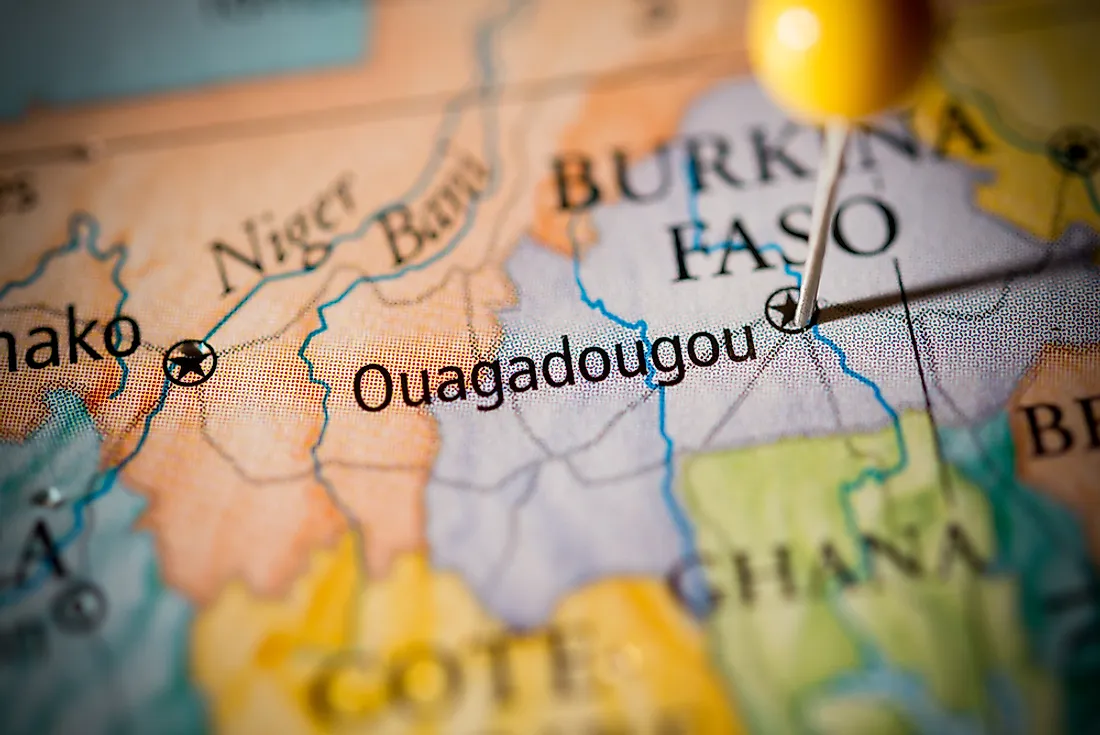What is the Capital of Burkina Faso?

Burkina Faso is an African state located in West Africa. It is a landlocked country surrounded by six countries namely Mali, Benin, Ghana, Niger, Togo, and Ivory Coast. Burkina Faso covers an area of 105,900 square miles. The type of government in the country is a unitary semi-presidential republic. The capital city of Burkina Faso is Ouagadougou.
Brief History of Ouagadougou
Before the French colonial rule, Ouagadougou was the capital of the Mossi Empire from 1441. It acted as the permanent dwelling place of the Mossi emperors. In 1919, the French made Ouagadougou the capital city of the Upper Volta territory—presently Burkina Faso. When the railroad from Ivory Coast reached the town in 1954, the population increased. It became a communal center in 1995.
The Current State of the Capital
Ouagadougou is an essential city in Burkina Faso. It acts as a cultural, administrative, economic, and communication center in the country. Besides being the capital, Ouagadougou is also the largest city in Burkina Faso. It had a population of 2.2 million in 2015. Ouagadougou is located within the Centre Region and the Kadiogo province. It covers an area of 219.3 square kilometers. The official language spoken in Ouagadougou is French with main local languages including Dyula and Fulfulde among others.
The main economic activities in Burkina Faso are the textiles and food processing industries. There is a railway that connects the city to Abidjan in Ivory Coast. Additionally, the capital has an international airport called Ouagadougou Airport. The city has three universities with the largest being the University of Ouagadougou. Ouagadougou has several sister cities, including Quebec City (Canada), Ankara (Turkey), Kumasi (Ghana), and San Miniato (Italy) among others.
Tourism
Ouagadougou is a beautiful city which attracts many tourists annually. Some of the attraction sites include the National Museum of Music, the National Museum of Burkina Faso, several craft markets, and the Moro-Naba Palace. Notable parks in the city include Parc Urbain Bangr-Weoogo, L’Unité Pedagogique, and the Garden of Ouaga-Loudun Friendship. Other places that visitors may visit include La Place du Grand Lyon, Musée de Manega, Laongo, and Naba Koom. Visitors should also be sure to attend the live bands, dance and concert venues, and electric arts hubs. Other tourist attractions include international festivals such as the Panafrican Film and Television Festival of Ouagadougou (FESPACO), International Theatre and Marionnette Festival (FITMO), and International Art and Craft Fair (SIAO).
Climate
Ouagadougou has a hot semi-arid climate. It is closely related to a tropical wet and dry weather. It receives 800 mm of rainfall annually. The rainy season takes place from May to October. On the other hand, the city experiences cold seasons from December to January. The minimum average temperature during the cold season is 16 degrees Celsius. During the hot season, from March to May, temperatures reach a maximum of 43 degrees Celsius. Ouagadougou’s climate is mainly affected by the harmattan and monsoon winds.











